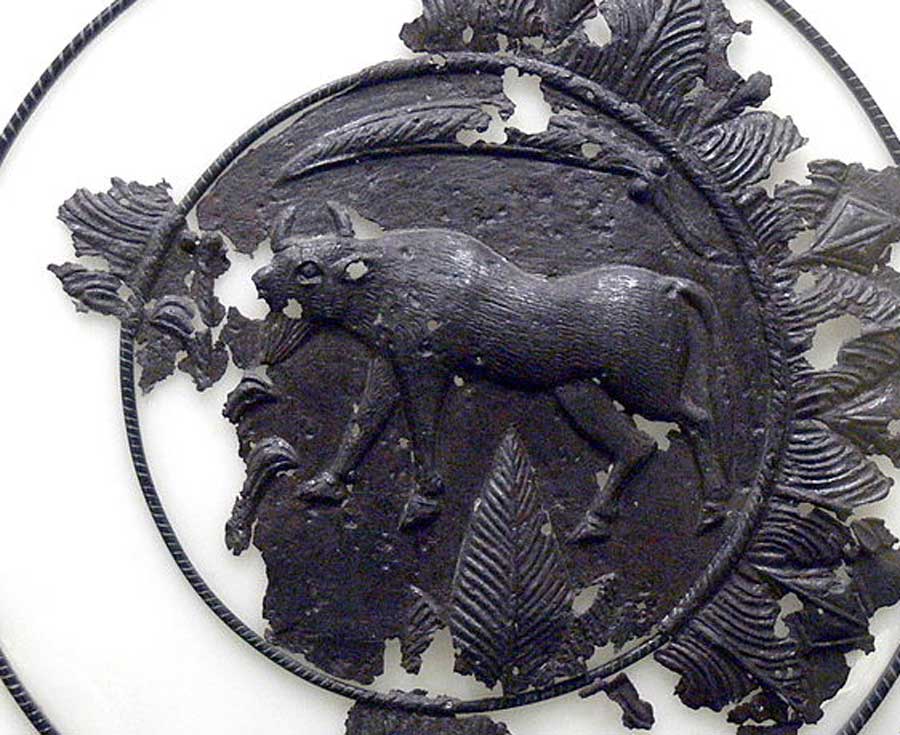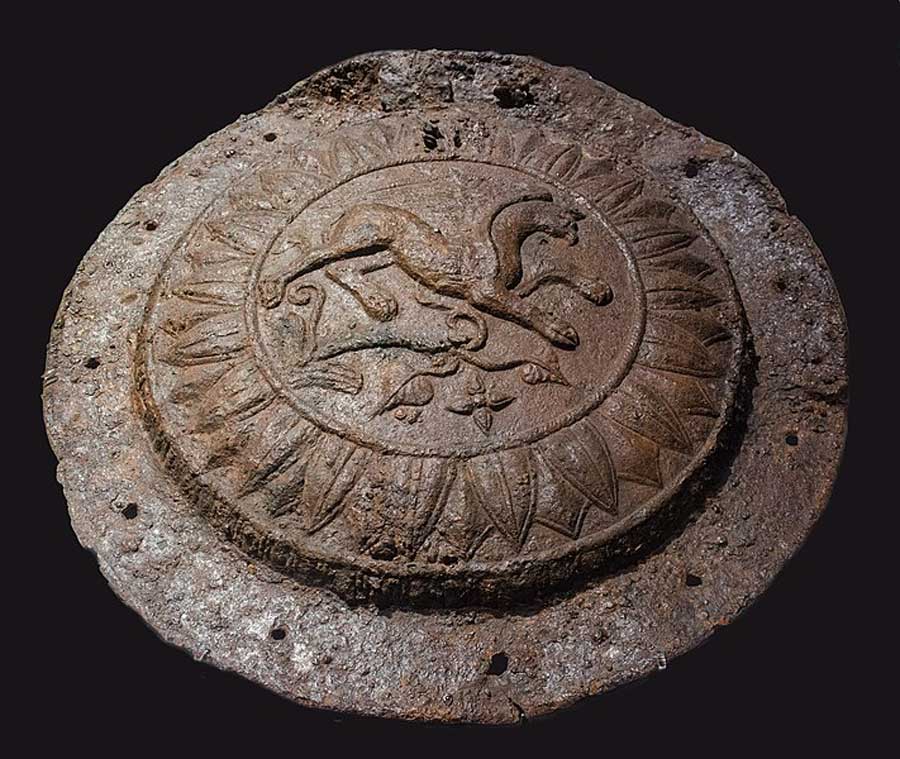Much of what survives in the archaeological record can be roughly divided into two groups. There are the treasures of the tombs of kings and emperors, both rare and priceless. And there are the rubbish tips and middens with something to tell us of ordinary life, all those years ago.
Rare indeed is a find which combines the two, but the Dacian Bronze Matrix is just such an artifact: a press tool for constructing jewelry, which is both exquisite in its craftsmanship and filled with information about the ancient Dacians.
These ancient peoples hid deep within the Sureanu Mountain forests in south western Transylvania some 2,000 years ago. Their capital of Sarmizegetusa Regia, where the matrix was found, sits atop a 3,950 feet (1,200 m) high mountain, an area comparatively easy to defend against Roman incursion.
Discovered as recently as 2013, the matrix is the center of attraction at the Museum of Dacian and the Roman Civilization in the city of Deva in Romania. A storm had uprooted a tree, exposing the matrix and leading to its discovery in near perfect condition.
The designs on the matrix, intended to be pressed into gold to make jewelry, have much to tell us of the unique style of ancient Dacia. And so far, it is the only known matrix ever to be found from these ancient mountain peoples.
A Monument to Artisanship
The Dacians were clearly keen on the depiction of animals, and the matrix itself is hexagonal and covered in such designs, both real and fantastical. The real animal figures range from the domestic, such as goats and dogs, to exotic lions, rhinoceros, leopards, tigers and hippopotamus.
- Gundestrup Cauldron: Its Tale From the Balkans to Denmark
- Arsenical Bronze: Deadly Metal of the Bronze Age
Many of the animals were depicted as fighting each other, a popular inclusion known from other surrounding civilizations at the time, notably the Romans. Around 17.5 lbs (8 kg) of bronze was used in total to cast the matrix. The bronze must have been very expensive, as all of the sides have been used, including the six 2 inch thick (5 cm) sides.

Out of all the real animal representations on the matrix, the most common ones are of an elephant, hippopotamus, and rhinoceros. This is thought to be because those animals were seen in the amphitheater games of those times.
However, oddly, there are no anthropomorphic or vegetable symbols anywhere on the matrix, and only animals have been discovered. It may be that this matrix was the “animal” set used by the jewelers, and that other lost matrices existed depicting people, or plants.
The Dacian Aristocracy
The Dacian Bronze matrix was created around the 1st Century BC. Somewhat uniquely therefore, we have what is almost a catalogue for animal jewelry worn by the Dacian aristocracy at this time, and the artistic trends preferred by these people.
The differing styles and options available on the matrix offer far more information than simply finding a single piece of completed jewelry. By exploring the designs on the matrix, you can understand the value that the Dacians placed on certain forms and designs, a silent language educating us about their culture.
This understanding of the Dacians should also allow a greater knowledge of the entire Northern Pontic (to the south of the Black Sea in Turkey) and Mediterranean Region. As an example, griffins within the matrix are depicted in different types, with there being a vulture type griffin, wolf type griffin, and lion type griffin.

Griffins traditionally had the body of a lion and the head and wings of an eagle. It appears clear from this that the Dacian jewelers were looking emphasize a certain aspect of this fantastical creature, perhaps to reflect a facet of the wearer’s personality.
A Mystery of Symbology
It is clear that the artistic creators of the matrix wanted to represent the battle between animals, but there may be other clues to the Dacians hidden in these depictions. This is not the first archaeological discovery that was made within their ancient capital of Sarmizegetusa Regia.
Prior to this matrix, a sophisticated calendar was also discovered. The calendar, also around 2,000 years old, was at that point considered the most ancient calendar in the world, older and more precise even than the Mayan calendar.
The Dacian calendar identifies a year as having 365.242197 days, a surprising level of accuracy. The images over the calendar had some resemblances to the matrix, but also told different stories about how the cultures and people were in contact with the ancient Romans.
Research is on-going to understand how the matrix is connected to the depictions on this calendar and to other Dacian finds in the area. Who knows what secrets are hidden, waiting to be revealed by this treasure.
On Display
The importance and value of the matrix is so great that it sits in its own room in the Dacian and Roman Civilization Museum of Deva, in Romania. The display is organized in such a manner that these visitors can see all sides and engravings that cover the bronze artifact.
The showcase and the careful use of lighting allow a detailed view of all of the facets. The manager of the museum, Liliana Tolas, has stated that the matrix should be both safe and accessible to visitors.
Top Image: The Dacian Bronze Matrix provides a catalogue of jewelry examples from two millennia ago. Source: Міша Мула / Adobe Stock.
By Bipin Dimri